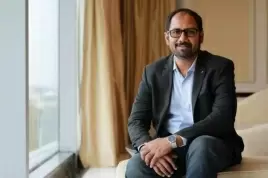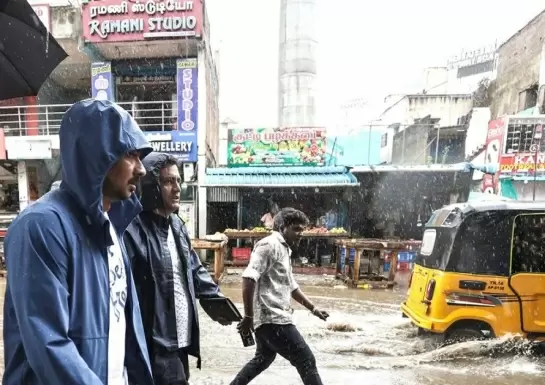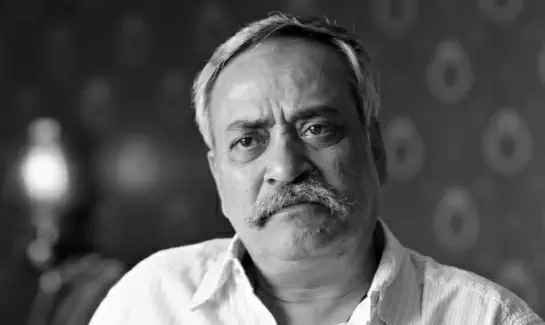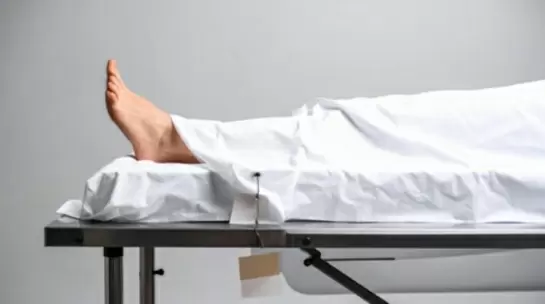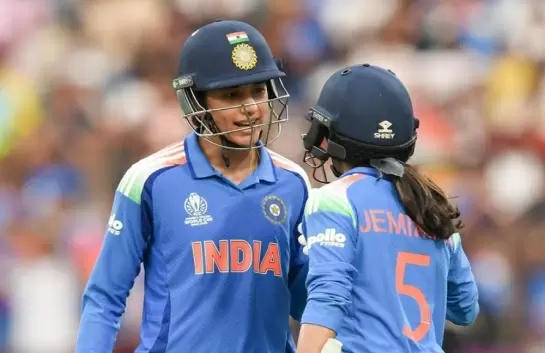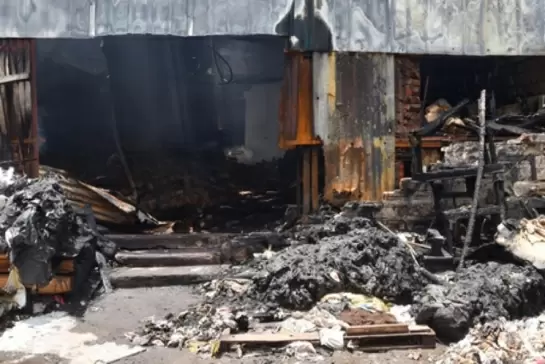Bishop of Mannar may disappear and it is for the Pope and the world to take note of

11-May-2012
Vol 3 | Issue 19
This is an urgent appeal to prevent the possible assassination/ ‘disappearance’ of the outspoken Roman Catholic Bishop of Mannar, Rayappu Joseph, his fellow Catholic priests in the North and East, and others, who call themselves ‘Civil Society’, who are the only voices of the Tamil people in this part of Sri Lanka.
I write, not as a concerned Christian, but as a concerned human being, to apprise the international community, including the Pope, of what might happen in the Democratic Socialist Republic of Sri Lanka, as it likes to call itself.
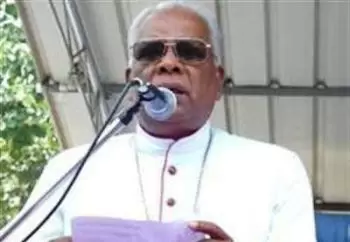 |
|
Bishop Rayappu’s life may be under threat (Photo courtesy: Global Tamil News)
|
Anyone who is even minimally aware of what is going on behind the closed and censored door of President Mahinda Rajapaksa’s Totalitarian State will know that murder is rampant, and accountability non-existent in Sri Lanka.
Murder or ‘disappearance’ is the Government’s answer to any problem, and the only method of silencing the dissenting voice.
Irreplaceable
If such a fate befalls Bishop Joseph (and his fellow priests), it will be a disaster for the Tamil people in the North and East. They, in particular Bishop Joseph, are the only voices that these people have, since their elected members of parliament have gone ‘quiet’ – as so often happens when a democracy is closing down.
Bishop Joseph, his fellow Roman Catholic clergy, and ‘civil society’, have done more to highlight the terrible plight of a voiceless people than all their parliamentarians put together.
In that blood-drenched country where so many thousands of Tamils have been butchered by the Rajapaksa junta, and some 300,000 Tamil civilians made ‘non-people’, Bishop Joseph, his clergy, and members of ‘civil society’, are the single biggest threat. This is not an opinion to be debated, but a fact to be faced and addressed before it is too late.
Bump them off
Already more than a dozen Christian priests, mainly Roman Catholics, have been murdered, abducted or have simply gone missing – “disappeared”. In the Sinhalese South, it is the dreaded ‘white van’ with no number plates that arrives. The victim is bundled in and that is that.
In the Tamil North and East, these niceties are not considered necessary. Just a straightforward abduction by ‘unknown men’ will do. Whether the victim wears a cassock or not, is not of significance.
It is brazen – plain simple murder, done with the assurance that the Government, the overwhelmingly Sinhalese (99%) Sri Lankan Armed Forces (now running the North and East), the Police, and the crumbling legal system under the heel of the Executive President with sweeping powers, will do nothing to bring the perpetrators to book. Many of these are, in fact, directed by members of the ruling junta.
There is no investigation, not even the pretence of one. The Government does not think it is called for. If there are calls, those who do so are ‘enemies of Sri Lanka’, ‘traitors’, ‘terrorists’ or even ‘Tamil Tiger Terrorists’.
In Sri Lanka, any Tamil is a ‘terrorist’ unless he stands close to the blood-drenched Sri Lankan flag. So are others (like the writer of this paper, who is a Sinhalese).
Ethnicity no longer matters. To be critical or even to question what the ruling junta does, is, by definition, ‘terrorism’ or treason, and treated as such. George Bush’s “You are with us or with the terrorists” is applied absolutely in Rajapaksa’s autocratic Sri Lanka.
Mannar and Bishop Rayappu Joseph
Mannar
Mannar district is one of 25 administrative districts in Sri Lanka, located in the North East, with a population of about 130,000, mainly Tamils (and some Muslims).
It is linked to Mannar Island by a causeway. Mannar Island is a dry and barren area of about 50 square kilometres. Fishing is economically vital for survival. Deliberate destruction of this (as the GoSL has done) will result in starvation.
The Mannar Diocese has some 86,700 Catholics, 69 priests, and 21 religious priests. Rt Rev Dr Rayappu Joseph is the Bishop of Mannar.
The Madhu Church, on the mainland in the Mannar district, is one of the ancient Churches of Asia. It is the holiest Roman Catholic shrine in Sri Lanka, home to Sri Lanka’s most famous Catholic statue, the centuries old, priceless statue of the Blessed Virgin Mary.
In 1920, Bishop Brault (the then Bishop of Jaffna) obtained the Pope's sanction for the Coronation of the Statue.
In August, thousands of Catholics from all over Sri Lanka go to Madhu for the annual ‘Madhu festival’. On 18 August 2010, there were more than 450,000 people.
In November 1999, the Sri Lankan Armed Forces (99% Sinhalese) thought nothing of shelling this Church, causing extensive damage.
The Pesalai Catholic Church, one of the largest churches in Sri Lanka, is in Mannar Island. The Sri Lankan Navy thought nothing of tossing hand grenades into the Church, having asked the civilians to take shelter in ‘places of worship’ – which I hope a Church is.
The murder of Tamil Christian priests in Mannar is nothing new. Let me back-track to ensure that history does not repeat itself.
Fr Mary Bastian was a Catholic priest in Vankalai in the Mannar district. He was abducted on January 5th, 1985, by the Armed Forces, tortured and murdered. The body was clandestinely burnt.
Several witnesses saw the Priest being taken away by the soldiers. Pope John Paul had a special prayer for the departed soul of Fr Bastian. I have no idea what good that did but I do know that a few days later, a Tamil Methodist Priest, George Jeyarajasingham, was ambushed and killed by the Sri Lankan Army.
Lalith Athulathmudali, the then President J.R. Jayawardene’s Minister of National Security (or rather, Insecurity), completely denied that the murder had occurred, adding insult to injury by tarnishing the dead priest’s reputation. He claimed that Fr Bastian had run away to India and was very much alive in Tamil Nadu.
Many Sinhalese Catholic priests in the South collaborated in this cover up. The most serious collaborator was Rt Rev Oswald Gomis, later appointed the Head of the Roman Catholic Church in Sri Lanka. Rev Gomis, the government propagandist, with the tacit consent of the then Archbishop of Colombo, Nicholas Marcus Fernando, wrote to the Vatican that Fr Bastian was alive and well in India.
The Pope retracted his earlier statement – something that is unknown. The Vatican issued a press release that the Pope had erred in praying for Fr Bastian’s departed soul and that he in fact was alive.
Let us make sure that the Pope is well aware of the dangers facing Bishop Rayappu Joseph and his fellow priests in the North and East.
Bishop Rayappu Joseph
Born in Delft (an island off the Jaffna Peninsula) in 1940, ordained in 1967, he was appointed Bishop of Mannar in July 1992.
It is impossible to even list out, let alone present, what this outstanding Catholic Bishop has done for the people of Mannar, and the wider community in the Tamil North and East.
As someone who is neither a Tamil nor a Roman Catholic, all I can say is that this extraordinary man and his lone voice of protest in a hugely dangerous country, has been an inspiration to all of us who have an interest in human rights in general, and the violations against the brutalised Tamil ‘minority’ in particular.
What has Bishop Rayappu Joseph done?
What ‘hanging offences’ has the Bishop committed to ‘warrant’ assassination or ‘disappearance’? In a sentence – he has looked after his flock – not just Catholic Christians, but Christians of all denominations, non-Christians, and non-believers.
If we believe what is in the Bible, they are all God’s children – which Bishop Joseph has applied absolutely. He is not only the leader of the Catholic Church in Mannar, but a humanitarian, which is why his ‘elimination’ will affect everyone.
Let me take you through some of Bishop Joseph’s ‘hanging offences’, seen as such by the Government of Sri Lanka (GoSL).
I will not deal with what Bishop Joseph has done for his people in Mannar, traumatised by the war in Sri Lanka, prior to 1999. It will simply take too long. I will deal only with some of the more recent events.
The bombing of Mannar
When the Sri Lankan Air Force and Navy decided to bomb and shell Mannar in 1999, Bishop Joseph urged that civilians be spared. They were not. As scores of civilians, men, women and children, were slaughtered or injured, Bishop Joseph lodged a strong protest with the Armed Forces, went to care for the wounded, and to wipe the tears of those who survived. That was unacceptable to the GoSL.
The bombing of the Madhu Church in Mannar.
With the bombing getting closer to the Madhu Church (with its invaluable Lady of Madhu statue), some people (I am told they were Tamil Tigers – some of whom were Roman Catholics) – rescued this treasure. They returned it to the Church when this outrage was over. Had it not been for them this holy of holy statues would have been pulverised.
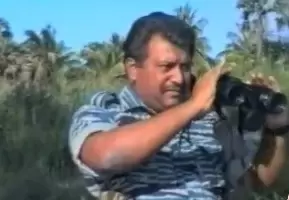 |
|
The LTTE saved the Lady of Madhu statue from the Sinhalese army
|
On 28 November 1999, the Madhu Church was bombed. The Church was extensively damaged, some 40 civilians killed and another 60 injured. The statue of Jesus Christ was damaged, as I have documented in one of my dvds. Bishop Rayappu Joseph raised a voice of protest at this outrage.
These protests are completely unacceptable to the GoSL. Churches and Hindu shrines (kovils), are there to be destroyed and replaced by Buddhist Statues, dome-shaped Stupas (‘Dagobas’), and Buddhist Temples – despite the fact that there are no (or very few) Buddhists in the area.
End of the war
Then came the end of the war, 19 May 2009.
Bishop Joseph, and many others in the North and East, waited for the return to normalcy and at least some accounting and reconciliation. With nothing but a futile “Lessons Learnt Reconciliation Commission” (LLRC) appointed by the Rajapaksa government, he and two of his fellow clergy, Rev. Fr. Victor Soosai, and Fr. Xavier Croos, made a detailed Submission.
This is a crucially important Submission which deals with what the people in the North and East are going through behind the closed and censored doors of Sri Lanka.
It is important to point out that despite the end of the war, internationally credible human rights organisations such as Amnesty International (AI), Human Rights Watch (HRW), and International Crisis Group (ICG), are not allowed into the North and East.
As such, we have to rely on people on the ground, like Bishop Joseph, his clergy, and ‘civil society’ to tell us what is happening to ordinary civilians.
Although the stated aim of the Submission was to deal with the situation in the Diocese of Mannar, what was presented applies to the entire Tamil area. It is a ‘must read’ document and is the only document ever published that gives the actual number of people who are unaccounted for, a staggering 146,679).
The Submission stated: “Based on information from the Kacheris (Government administrative centres) of Mullativu and Killinochi about the population in Vanni in early October 2008 and number of people who came to government controlled areas after that, 146,679 people seem to be unaccounted for. According to the Kacheri, the population in Vanni was 429,059 in early part of October 2008. According to UN OCHA update as of 10th July 2009, the total number of people who came out of the Vanni to government controlled areas after this, is estimated to be 282,380.”.
The US Envoys come to Sri Lanka
In February 2012, Ambassador Marian Otero, Under Secretary of State, and Ambassador Robert Blake, Assistant Secretary of State, US State Department, visited Sri Lanka to tell the Rajapaksa government that the US intended to submit a Resolution on Sri Lanka at the upcoming 19th Session of the UN Human Rights Council (27 February – 23 March 2012).
19 Tamils, non-politicians, (“Civil Society”), including Bishop Rayappu Joseph, immediately sent a letter to them (10 February 2012). It is the most concise and precise letter I have seen, written by people with genuine concern about the Tamil people. I had intended just to quote from this but it is such a comprehensive letter that I decided to reproduce it in full:
10 February 2012
Ambassador Maria Otero, Under Secretary of State
Ambassador Robert Blake, Asst Secretary of State,
US State Department.
Your Excellencies,
Tamils of Sri Lanka and the Forthcoming Sessions of the UN Human Rights Council.
In the context of the forthcoming sessions of the UN Human Rights Council in Geneva, we, members of the Tamil civil society in Sri Lanka, write this letter seeking to bring to your notice our expectations of the Geneva sessions.
1. With deep regret we take note of the fact that the report of the Presidential Commission of Inquiry on Lessons Learnt and Reconciliation (LLRC) has become the point of reference in the discussions on Sri Lanka in Geneva. We wish to emphasise that it is important to give preeminent status and importance to the UN Secretary General’s Expert Panel Report on Sri Lanka in the discussions and particularly to highlight the unbridgeable gaps between the LLRC report and the UNSG’s Expert Panel’s report.
2. It is no secret that the appointment of the LLRC was an attempt on the part of the Government to buy time from the International Community - to postpone the setting up of an international mechanism to investigate into the grave atrocities committed against the Tamil people. The contents of the LLRC report should be viewed from this perspective – the purpose that it seeks to serve in furthering the short and long term goals of the Government of Sri Lanka.
3. It is not disputed that the LLRC report has failed in reasonably addressing the question of accountability. On the other hand the recommendations relating to scaling down militarization, disarming paramilitaries et al have been deliberately included so that any reasonable reader cannot outrightly reject the LLRC. This means that the international community is in a way forced to welcome these ‘positive features’ of the LLRC report, pressurize for implementation of those recommendations and postpone any move towards setting up an international mechanism to look into the question of accountability. This is exactly what the Government of Sri Lanka wanted with the LLRC.
4. Though many are surprised that a Government appointed commission could come up with such ‘positive recommendations’, we on the contrary are not. We were right from the beginning aware that the appointment of the LLRC would be a time buying exercise and the report that has been released has its objective of further buying time for the GOSL. In fact none of the commissioners reflected the kind of views that are now considered to be ‘positive’ in the LLRC report. The Chairman of the LLRC in his questions to Dr. Jayantha Dhanapala, a former Under Secretary General of the United Nations, who appeared before the LLRC in a public hearing in Colombo, was of the opinion after visiting the North that the Tamil people were not seeking constitutional reforms but only job opportunities. Hence it is not abnormal to be surprised that this very commission had chosen to go against the thinking of its Chairman and acknowledge that the Tamils have true political grievances, which require a political solution. But this only reiterates the point that we make, that the commission has made these positive recommendations which even some of its commissioners including its Chairman don’t believe in, to achieve the political purpose of its appointers. Furthermore a careful reading of these so-¬called ‘positive recommendations’ will only reveal that they do not accomplish much. For example the substantive recommendations on a political solution parrot the Government’s stated position on a political solution: empower Local Governments and establish a second chamber. (Paragraphs 9.231 and 9.232 of the report). On the question of paramilitaries the report conveniently ignores the well-¬acknowledged fact that the paramilitaries of the EPDP and TMVP are in fact controlled by Sri Lankan Army Intelligence. (Paragraphs 5.77 and 5.78 of the report). It is also no secret that the leadership of these two para military groups enjoy ministerial portfolios and that their cadre received monthly stipends for many years from the country’s defense budgets. It is also glaring that the commission does not call for the repeal of the PTA (Paragraph 9.57 of the report). The recommendations relating to for example detainees are welcome. However such recommendations fall short of reflecting the overall complexity of the issues and have been included to cover up the report’s otherwise glaring failures. The report thus quite cleverly accomplishes its founding objective of giving the feel good while not straying too far and conceding too much from the current Government’s positions on many of these vital questions.
5. We have no faith whatsoever that these so called ‘positive recommendations’ of the LLRC report will be implemented. We state this not only from our past experience with presidential commission reports in Sri Lanka but also because we have completely lost faith in the governance framework of this country. We also have no trust in the negotiations taking place between the GOSL and the Tamil National Alliance, which we perceive, again, as a convenient time buying exercise by the Government of Sri Lanka.
We urge that it is imperative that the International Community that meets in Geneva this March for the UN Human Rights Council sessions takes a firm stance on accountability. As expressed by our elected representatives (the Tamil National Alliance) in their initial response to the LLRC on the 19th of December 2011 we urge the ‘international community to acknowledge the consistent failure of domestic accountability mechanisms in Sri Lanka and take steps to establish an international mechanism for accountability’. Any resolution coming out of the Human Rights Council, which gives more time to the Government of Sri Lanka, will have a devastating impact on the Tamil community. The Government’s current activities in the North and East are challenging the very existence of the Tamil people and more time to the GOSL to implement the LLRC’s recommendations will only mean further time for the Government to play havoc in the North and East and subjugate the interests and aspirations of the Tamil people. If the International Community does not act now, like they did not act in May 2009, the Tamils will cease to exist as a ‘people’ in this country.”
[Signed by 19 civil society representatives]
People who write such letters, uncomfortably near the truth, have no place in Rajapaksa’s “Democracy” and must be ‘eliminated’.
UNHRC Submission
On 1st March 2012, 31 Christian clergy in North Sri Lanka headed by Bishop Rayappu Joseph, made a Submission to the UN Human Rights Council 19th Session that had started on 27 February.
Bishop's House, Pattim, Mannar, Sri Lanka
1st March 2012
To: The President and all members of the United Nations Human Rights Council
Dear Excellencies,
UN Human Rights Council sessions and resolution on Sri Lanka
We are writing to you as a group of concerned Christian clergy in North Sri Lanka who have been directly affected by war and have been working to ensure rights of people in our region before, during and after the war, while being concerned and committed to broader issues of human rights, democratization and rule of law in Sri Lanka. We have also been trying to monitor domestic and international developments in this regard and contribute constructively to such processes.
Although we are not privy to the official positions and documents of members of the Council in relation to actions contemplated related to Sri Lanka, we welcome that the UNHRC members appear to be taking some action towards protection of human rights in Sri Lanka, even though this comes bit too late, after massive loss of life and sufferings. At least now, we urge the Council to act decisively in relation to Sri Lanka, to enable Sri Lankans to move towards genuine reconciliation.
Given the consistent denial of the Sri Lankan government about scale and nature of war time abuses as well as pre-war and post-war concerns, refusal to address these, and given also the seriousness of the allegations levelled against it as one of the parties to such abuses, we believe it is an independent international body that could best address concerns of truth seeking, accountability and reparations for victims in a way that victims, survivors and their families will have confidence. It is only by addressing these that we believe we can move towards genuine reconciliation.
The LLRC has quite rightly identified abuses by the LTTE and also come up with some positive recommendations that has potential for reconciliation. But it has failed to address critical issues of truth seeking and accountability, despite strong evidence and testimony before it. The record of various domestic bodies whose recommendations successive governments have ignored, including the LLRC’s own interim recommendations issued more than a year ago and threats and intimidation of witnesses who gave testimony to the LLRC including a Christian Priest had made us lose confidence that our concerns will be addressed through LLRC. In fact, the post LLRC track record of abducting human rights defenders in Jaffna, obstructing human rights day event in Jaffna, obstructing peaceful campaigns in the North, killing of a protesting fisherman in Chilaw, vicious hate campaigns against journalists and organizations critical of the government, singing of the national anthem in Sinhalese only and a host of such activities indicates the absolute disregard for the LLRC report by the Government of Sri Lanka.
This, we believe it is imperative that the UNHRC calls on the Government to:
1. Implement LLRC recommendations,
2. Present a time bound, detailed and specific action plan in this regard to the 20th session of the UNHRC,
3. Report back on progress made on implementation to the 22nd session of the UNHRC, and
4. Accept the appointment of and fully cooperate with an international independent and effective mechanism to monitor above and address accountability issues not dealt with by the LLRC.
Thank you.
Sincerely yours,
Threats
The threats to Bishop Joseph have come from ‘unspecified sources’ – which most of us who are familiar with Sri Lanka would prefer to call “the Rajapaksa regime”. These have been freely aired by Media such as the Sunday Divaina website.
An open threat came from the party of the Buddhist monks – JHU, Jathika Hela Urumaya (National Freedom Front), a Government coalition partner, that accuses Bishop Joseph of aspiring to become the Cardinal of Tamil Eelam (Independent Tamil State) and calls for his arrest and prosecution.
These politically-active Buddhist monks can be, and are, very violent. It was one of them who assassinated Prime Minister S.W.R.D. Bandaranaike in 1958. Those who believe that as followers of Buddhism, monks cannot be violent, might like to know that Pol Pot was a Buddhist monk.
On 23 March 2012, President Rajapaksa’s Minister of Public Relations and Public Affairs, Mervyn Silva, addressed a public meeting in Kiribathgoda (near Colombo) and said that he will “break the bones” of Sri Lankans who supported the UNHRC Resolution in Geneva, adding that he would do this himself.
Let me be clear. These are not just empty threats in Sri Lanka, as Lasantha Wickrematunga, the Sinhalese owner/editor of the Sunday Leader (the only newspaper in Sri Lanka to be critical of the Government) found out. He was assassinated in broad daylight, by four masked men, when he was on his way to work in a suburb of Colombo.
Many others critical of the government, or even those who even dare to question what the Government is doing, have gone the same way, or have been bundled into a “white van”, never to be seen again.
Amnesty International has just reported that in the past six months some 32 people have ‘disappeared’ in Sri Lanka – almost certainly an underestimate because many families are too afraid to report such ‘disappearances’ to the Police or the Armed Forces who run the North and the East.
What could be done?
To give the Bishop, his clergy and members of ‘civil society’, and now even human rights activists in the Sinhalese South, physical protection is impossible. The Sri Lankan regime can do whatever they want, to whomever they want with complete impunity. They have and they will. So will the likes of Minister Mervyn Silva and his goons.
The only possible ‘protection’ that can be given is the force of public opinion, in particular, international opinion.
What can be done (if anything) is to apprise the world of what might happen, and to let the regime in Sri Lanka know that the world is watching.
“Not a single civilian was killed by our soldiers. It was all done by the Tamil Tigers” said President Rajapaksa, on the first anniversary of the slaughter, in his ‘tapestry of lies’.
Adding to the tapestry, he went on, “Our soldiers went to war with a gun in one hand and the human rights convention in the other”. This, mind you, was to hundreds of people, several of them from the diplomatic community invited for the tamasha in Colombo.
The Rajapaksa junta no longer bothers about the truth. They see no point in being reticent or even devious.
It simply does not give a damn about the United Nations, International Law or critical dissent, which it regards as impotent and irrelevant.
The problem is how one can protect outspoken people such as Bishop Rayappu Joseph from such a regime.
I do not think it is possible – except to let the junta know that the world is watching.
Dr. Brian Senewiratne (MBBS Hons (Lond) MD (Lond), FRCP (Lond), FRACP) is a Sinhalese doctor currently based in Australia
Also Read
Mannar Bishop questioned by Sri Lankan CID on ‘disappearances’








